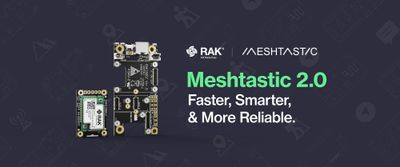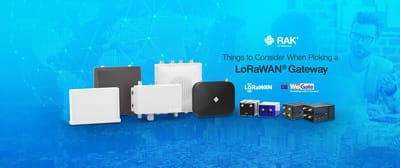Making Your Waste Management Troubles Disappear With LoRaWAN
In the last few decades, waste management was simply all about disposing waste materials to landfills. It was also as much concerned with disposal of waste materials to other sites.
In subsequent times, the Internet of Things, IoT, has taken up the responsibility of modifying the waste collection methods in cities by providing operational analytics and route optimization.
Better put, smart wastewater management is the in-thing now. This trend is attributed to the global demand for clean water, which doubles every 10 years. The need for more effective and smart wastewater management is becoming greater than ever.
Communities are now seeing how critical it is to effectively manage their process wastewater and for fresh water supply. This is often done with the idea that they would deploy fewer financial resources to use.
Strikingly, the ability to access and manage treatment systems in water management is more critical than before in. The catch is, through the use of various wireless technologies, the implementation couldn't be better appreciated.
LoRaWAN and Waste Management
There are some waste management packages in the market. They serve precise monitoring of the fill level and trigger an alert upon exceeding the already programmed threshold.
This is one of the basic solutions provided by LoRaWAN to manage, and possibly get rid of all waste management concerns completely. Ultrasonic sensors are deployed in this solution especially in terms of accuracy and repeated distance measurement.
The LoRaWAN Technology
The LoRaWAN technology, that is, the Long Range Wireless technology allows for easy installation with any device. It also affords users the ability to monitor the sensors in large areas, and at very low infrastructure cost.
Also, the design of this system is such that it is easy to use and gives immediate and prompt alerts in case there is a fall out of any condition from their optimal ranges.
The Carrier Grade System
The Carrier grade system is used by all tier 1 waste management service providers and major OEMs across the world. With a 24/7 supervision, the LPWAN gateways and devices are entirely managed by a geo-redundant platform.
In the fundamental level, the wireless network management console has the following features and responsibilities:
- Managing all LoRaWAN gateways that constitute the LPWAN network
- Monitoring the network, RF cells and WAN backhaul connections
- Managing alarms
- Analyzing traffic trends
- Creating and managing routes to application servers
The device management console is also involved in;
- Managing of all LoRaWAN devices
- Monitoring device traffic and battery status
- Managing device activity alarms
- Providing access to LoRaWAN network sniffer
- Managing connectivity plans and their associations to devices
For water utilities, especially, the LoRaWAN technology is purposely to encourage communication among devices across several kilometers. This can be used by devices from many manufacturers.
In essence, an open global standard for IoT enabled devices means you need to enable utilities to perform extraordinarily beyond the meter to read the consumption, pressure, tank levels, rainfall and other parameters.
Thus, irrespective of the manufacturer chosen, they must adapt to all kinds of network topology, support reliable self-heal and enhance future expansion.
LoRa-based internet of things, IoT, solution is known to save up to 22% in water management. Similarly, in a report, up to 20% reduction in waste water was discovered with LoRaWAN. This is where you get a mix of semiconductors and blend of advanced algorithms to manage water utility systems.
The LoRa technology has been tremendously helpful in the last few years, with hundreds of installations across the globe, and saving many millions of gallons of water till date.
Every water-intensive setup like hotels, carwashes, supermarkets, food and beverage processors, and commercial buildings are served with this incredible IoT solution.
Moreover, the LoRa devices and wireless radio frequency RF technology from different manufactures have a single function which is to serve as a long-range, low-power IoT solution for system integrators, telecom companies and others to deploy less costly, and interoperable IoT networks, sensors, gateways, and IoT services worldwide.
Having been deployed in more than 100 countries of the world, the LoRa-enabled IoT solution is an innovative technology applied in the water sector to open new horizons to reduce water, improve quality of water and optimize water consumption.
The solutions vary from the specific industry they serve to another. These include smart irrigation systems for farming, water supply plans for living areas, detection of leakage for buildings or industries or control of water quality.
With the different software components, you can now get rid of every wastewater management trouble that encourages supervision of wetlands and are focused on;
1. Integrating: All data source from the physical devices like sensors, PLCs, registers and so on are integrated with LoRa. Also, those from software systems like services, management systems, files, web, and others are not excluded.
2. Processing: This is where the integrated information is processed and logic generated by default, tailoring them to meet the business needs.
3. Analyzing: The web interface is where the user can analyze the information through the tools of reporting, graph analysis, correlations, maps and synoptic charts.
This is bearing in mind that the goal is to centralize the information on a platform which can be from any device. Now, each user will gain access to specific and personalized information to help them decide properly, and this consequently improves the project's productivity.
Benefits and Features of Waste Management with LoRaWAN
The goal of using LoRaWAN with waste management is to fulfill the needs of extensive monitoring and control. The benefits of choosing this cannot be overemphasized.
They range from cost-savings, helping the administrator locate potential danger of wastewater immediately, and sending real-time reports alarm to the concerned controller. Also, it helps keep the water quality synchronized always.
1.Optimized response time and immediate indication of critical diagnostic information
2.Improved monitoring and water flow control over long distances
3.Reduced costs for manual labor and enhanced efficiency
4.Improved operator safety which ultimately eliminates the need to travel to remote site locations to get readings
5.Reliability thanks to the rich interfaces
6.Simplified installation and network commissioning with reduced requirement of infrastructure.
Yes to Easy!
Finally, it is not an easy task to exploit the water , ICT and land resources sectors. But with LoRaWAN, small communities and other interested businesses/governments can use this wastewater treatment method in a cost-effective, energy-saving and environmentally-friendly manner to achieve their aim of continuously wandering about and managing wastewater every now and then.





